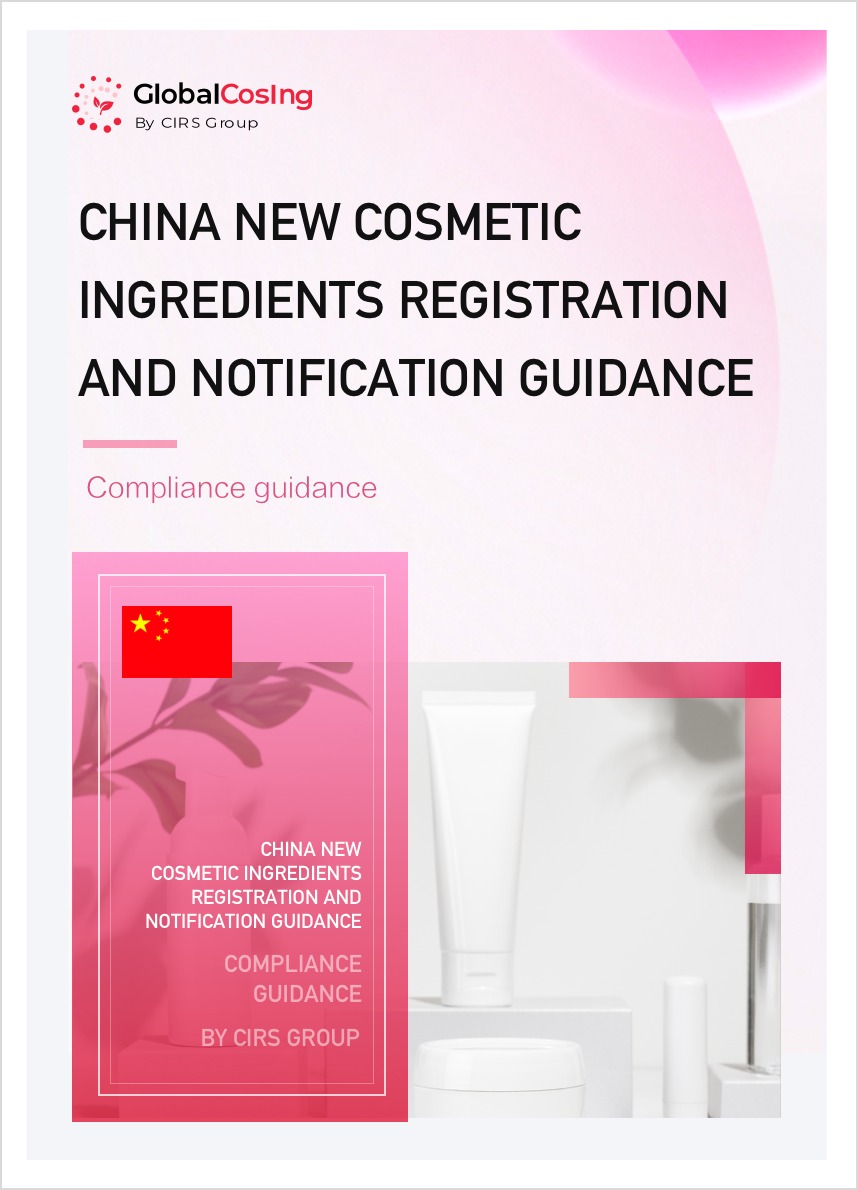8. Testing Requirements for Registration and Notification of New Cosmetic Ingredients
In accordance with the Cosmetics Supervision and Administration Regulation (CSAR) and the Provisions on the Administration of New Cosmetic Ingredients Registration and Filing Data, new cosmetic ingredients are required to undergo relevant safety assessments and testing to ensure their safety and regulatory compliance. The safety assessment of new ingredients generally requires testing in the following areas: physicochemical properties, microbiological testing, efficacy evaluation, toxicological studies, and stability testing.
8.1 Toxicological Testing
In principle, the following toxicological test data shall be provided for new cosmetic ingredients subject to registration or notification:
- Acute oral or acute dermal toxicity test
- Skin and eye irritation/corrosion test
- Skin sensitization test
- Phototoxicity test (required if the ingredient has ultraviolet absorption properties)
- Photoallergenicity test (required if the ingredient has ultraviolet absorption properties)
- Mutagenicity test (should include at least one gene mutation test and one chromosomal aberration test)
- Subchronic oral or dermal toxicity test (if the ingredient is likely to be ingested through cosmetic use, a subchronic oral toxicity test should be provided)
- Teratogenicity test
- Combined chronic toxicity/carcinogenicity test
- Inhalation toxicity test (required if the ingredient may be exposed via inhalation)
- Long-term human safety trial
Other toxicological test data may be required based on the characteristics and intended use of the ingredient.
8.2 Laboratory Qualifications
In China, tests involved in the registration and notification of new cosmetic ingredients must be conducted by laboratories with appropriate qualifications. The regulatory authority (National Medical Products Administration, NMPA) imposes strict requirements on laboratory qualifications to ensure the scientific validity and reliability of test data.
Laboratories issuing toxicological test reports and test reports for efficacy evaluations such as preservative, sunscreen, freckle-removing and whitening, and anti-hair loss must meet one of the following requirements:
- Accredited for cosmetic testing by obtaining the China Metrology Accreditation (CMA)
- Accredited by the China National Accreditation Service for Conformity Assessment (CNAS)
- Compliant with internationally accepted Good Clinical Practice (GCP) standards
- Compliant with Good Laboratory Practice (GLP) standards
Physicochemical and microbiological test reports, as well as efficacy evaluation reports other than for preservative, sunscreen, freckle-removing and whitening, and anti-hair loss:
Shall be issued by the cosmetic new ingredient registrant or notifier themselves, or by a testing institution with corresponding testing capabilities entrusted by them.
8.3 Requirements for Test Methods
Physicochemical, Microbiological, and Efficacy Evaluation Methods:
The physicochemical and microbiological tests, as well as tests for human safety and efficacy evaluation of cosmetic new ingredients, shall, in principle, follow the test methods specified in the Safety and Technical Standards for Cosmetics or the Pharmacopoeia of the People's Republic of China. For test items not specified in the Safety and Technical Standards for Cosmetics or the Pharmacopoeia of the People's Republic of China, testing shall be conducted in accordance with national standards, internationally accepted methods, or self-developed methods. If self-developed test methods are used, relevant documentation demonstrating the applicability and reliability of the methods shall be submitted.
Toxicological Test Methods:
Toxicological tests for new cosmetic ingredients shall be conducted in accordance with the test methods specified in the Technical Guidelines for Cosmetic Safety. For test items not specified in the Technical Guidelines for Cosmetic Safety, testing shall be conducted in accordance with national standards or internationally accepted methods.
Requirements for Alternative Methods to Animal Testing:
When alternative methods to animal testing are used for toxicological safety assessment, appropriate Integrated Approaches to Testing and Assessment (IATA) shall be selected based on the structural characteristics of the ingredient and the specific toxicological endpoint to evaluate the toxicity of the new ingredient.
If the applied alternative test method has not yet been included in China’s Technical Guidelines for Cosmetic Safety, it must be a method recognized by an internationally authoritative validation body for alternative methods. In addition, supporting documentation shall be submitted to demonstrate that the method can accurately predict the specific toxicological endpoint. The supporting documentation shall include a brief description of the research process of the alternative method, as well as research data, result analysis, and study conclusions for no fewer than 10 test substances with known toxicity.



